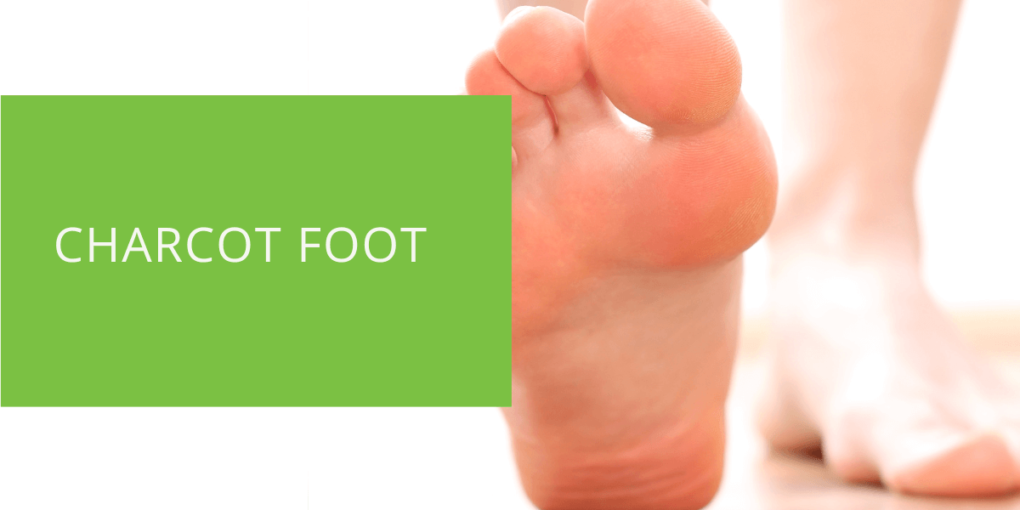Charcot Foot: Symptoms, Causes & Treatment
Charcot foot, also known as Charcot arthropathy, is a serious condition that can affect the feet and ankles of individuals with neuropathy, such as those with diabetes. If left untreated, Charcot foot can cause significant damage to the affected foot, including deformity and foot ulcers. It is important for people with diabetes, as well as those with other conditions that can cause neuropathy, to be aware of the symptoms of Charcot foot and to seek treatment as soon as possible to prevent further complications.
What is Charcot Foot?
Charcot foot is a progressive condition that occurs when the bones in the foot and ankle become weakened and begin to break down, leading to deformity and instability. This is often the result of nerve damage in the feet, which several conditions, including diabetes, alcoholism, and leprosy, can cause. The nerve damage can result in a loss of sensation in the feet, making it difficult for the individual to feel pain or discomfort. As a result, the person may continue to walk on the affected foot, causing further damage.

Symptoms of Charcot Foot
The symptoms of Charcot foot may include swelling, redness, and warmth in the affected foot or ankle. The foot may also feel heavy or weak, and the individual may have difficulty walking. In the early stages of Charcot foot, the foot may have a "rocker-bottom" appearance, with the toes pointing down and the arch of the foot collapsing. As the condition progresses, the foot may become deformed, with the joints shifting out of place. In severe cases, the foot may become ulcerated, leading to the risk of infection.
Causes of Charcot Foot
As mentioned, Charcot foot is often the result of nerve damage, which several conditions can cause. The most common cause of Charcot foot is diabetes, as high blood sugar levels can lead to nerve damage and reduced foot circulation. Other conditions that can cause neuropathy and increase the risk of Charcot foot include alcoholism, leprosy, and certain medications.
Diagnosis of Charcot Foot
If you suspect you may have Charcot foot, it is important to seek medical attention as soon as possible. Your doctor or podiatrist will perform a physical examination and may order x-rays to assess the condition of the bones in your foot. They may also test for neuropathy by checking your sensation and reflexes in your feet. The earlier Charcot foot is diagnosed, the better the chances of successful treatment.

Treatment Options for Charcot Foot
Several treatment options are available for Charcot foot, depending on the severity of the condition and the stage at which it is diagnosed.
Non-surgical Treatment
In the early stages of Charcot foot, non-surgical treatment may be sufficient to manage the condition and prevent further damage. This may include using a brace or other device to support the foot and offload pressure from the affected areas. The individual may also be advised to use crutches or a wheelchair to avoid placing weight on the affected foot. Your doctor or podiatrist may also recommend changes to your footwear and daily activities to reduce the risk of further injury.
Surgical Treatment
In more advanced cases of Charcot foot, surgery may be necessary to stabilize the foot and prevent further deformity. This may involve using screws or other devices to hold the bones in place, as well as the removal of any dead or infected tissue. The specific surgical approach will depend on the individual case and the extent of the damage.

Prevention of Charcot Foot
There are several steps that individuals with diabetes and other conditions that can cause neuropathy can take to reduce the risk of developing Charcot foot. These include:
- Regular foot care: It is important to inspect your feet daily and to keep them clean and moisturized. If you have difficulty reaching your feet or seeing them clearly, ask a loved one to help or use a mirror to get a good view.
- Proper footwear: Wear shoes and socks that fit properly and provide adequate support. Avoid going barefoot or wearing open-toed shoes.
- Regular check-ups: Visit your doctor or podiatrist regularly to have your feet checked for any signs of damage or infection.
- Control blood sugar levels: Maintaining good control of your blood sugar levels can help reduce the risk of nerve damage and other complications, including Charcot foot.
Conclusion
If you have diabetes or another condition that can cause neuropathy, it is important to be aware of the signs and symptoms of Charcot foot. Early diagnosis and treatment can prevent further damage and improve your chances of full recovery. If you suspect that you may have Charcot foot, don't delay in seeking medical attention. Your doctor or podiatrist can provide a proper diagnosis and develop a treatment plan to manage the condition and prevent further complications.
FAQ
What is Charcot foot?
Charcot foot, also known as Charcot arthropathy, is a condition that occurs when the bones in the foot and ankle become weakened and begin to break down, leading to deformity and instability. This is often the result of nerve damage in the feet, which several conditions, including diabetes, alcoholism, and leprosy, can cause.
What are the signs of Charcot foot?
The symptoms of Charcot foot may include swelling, redness, and warmth in the affected foot or ankle. The foot may also feel heavy or weak, and the individual may have difficulty walking. In the early stages of Charcot foot, the foot may have a "rocker-bottom" appearance, with the toes pointing down and the arch of the foot collapsing. As the condition progresses, the foot may become deformed, with the joints shifting out of place. In severe cases, the foot may become ulcerated, leading to the risk of infection.
What causes Charcot foot?
The most common cause of Charcot foot is diabetes, as high blood sugar levels can lead to nerve damage and reduced foot circulation. Other conditions that can cause neuropathy and increase the risk of Charcot foot include alcoholism, leprosy, and certain medications.
How is Charcot foot diagnosed?
If you suspect you may have Charcot foot, it is important to seek medical attention as soon as possible. Your doctor or podiatrist will perform a physical examination and may order x-rays to assess the condition of the bones in your foot. They may also test for neuropathy by checking your sensation and reflexes in your feet. The earlier Charcot foot is diagnosed, the better the chances of successful treatment.
How is Charcot foot treated?
Several treatment options are available for Charcot foot, depending on the severity of the condition and the stage at which it is diagnosed. In the early stages, non-surgical treatment, such as using a brace or other device to support the foot and changes to footwear and daily activities, may be sufficient. In more advanced cases, surgery may be necessary to stabilize the foot and prevent further deformity. Your doctor or podiatrist can determine the best treatment approach for your individual case.

